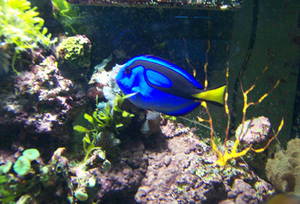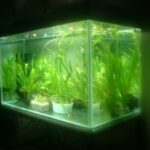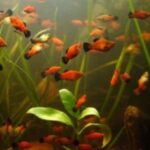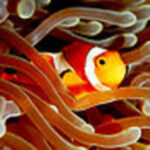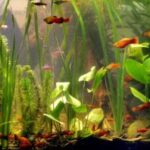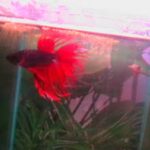Saltwater organisms require a bit more care than freshwater animals when it comes to changing environments. The water from the pet store or online retailer is going to be different from the water in your home aquarium. To creatures used to living in the vast, stable oceans those differences can come as quite a shock. Sometimes the differences can be deadly. There are a lot of critical factors in acclimating your fish or invertebrates to their new home. Temperature, PH, and Salinity are but a few of those factors. However, the great equalizer for all of those factors is TIME. Spreading those changes over time allows your new addition to gently make its adjustment to your aquarium. A few simple steps can prevent unnecessary and expensive tragedies from occurring in your saltwater tank.
Put the animals into a non-reactive bucket or container large enough to hold the shipping bag and all the water in the bag with plenty of space for more but small enough for the water to reasonably cover the fish or invertebrates.
Set the container close to and at least slightly below the destination aquarium. Take a generous portion of aquarium tubing, enough to easily reach the target container and to stick under the water in the destination aquarium and tie a loose knot in it about 5″ from the end nearest the container housing your new arrivals.
Start a siphon going with the length of tubing – don’t suck the tubing with your mouth if you can avoid it. One method is to submerge the entire length of tubing in the destination aquarium ensuring that some water gets into the line before tying it. Then tie your loose knot and drop the tubing over the side of the tank so it is positioned just above or just inside your acclimation container. Gravity should cause the water in the tube to run down pulling the air and water behind it down and start the siphon. Another method is to use a turkey baster or syringe in lieu of your mouth to suck on the end and get things going.
Allow the water to drip slowly (through the knotted tubing) into the acclimation container occasionally removing a bit of water from it and throwing it away. The bigger the difference in specific gravity between your tank and the shipping water the longer you should take acclimating your new livestock.
Once the water has at least quadrupled in the acclimation container and the specific gravity in both your aquarium and the container are nearly identical you may net the livestock and put it into the destination tank. Some things you’ll need to pick out with your hands. Others such as puffer fish and sponges will need to stay submerged which may be accomplished by pouring off most of the water in the bag, leaving just enough to cover your critter and plunging it gently into your tank, bag and all and releasing or positioning it. Do your best to avoid getting water from the shipping bags into your tank; it’s full of ammonia and other unsavory things from the journey.
Allow the water to drip slowly (through the knotted tubing) into the acclimation container occasionally removing a bit of water from it and throwing it away. The bigger the difference in specific gravity between your tank and the shipping water the longer you should take acclimating your new livestock.
Once the water has at least quadrupled in the acclimation container and the specific gravity in both your aquarium and the container are nearly identical you may net the livestock and put it into the destination tank. Some things you’ll need to pick out with your hands. Others such as puffer fish and sponges will need to stay submerged which may be accomplished by pouring off most of the water in the bag, leaving just enough to cover your critter and plunging it gently into your tank, bag and all and releasing or positioning it. Do your best to avoid getting water from the shipping bags into your tank; it’s full of ammonia and other unsavory things from the journey.
You may wish to feed your existing tank residents if you are placing your new acquisition into a display tank, rather than a quarantine tank. You should also turn the lights off before adding the new animals and leave them off for several hours to avoid stressing the critters unduly. I highly recommend using a quarantine tank to prevent the spread of disease from your new marine life, much of which is wild caught and may carry unknown disease vectors, to your older tank residents.
